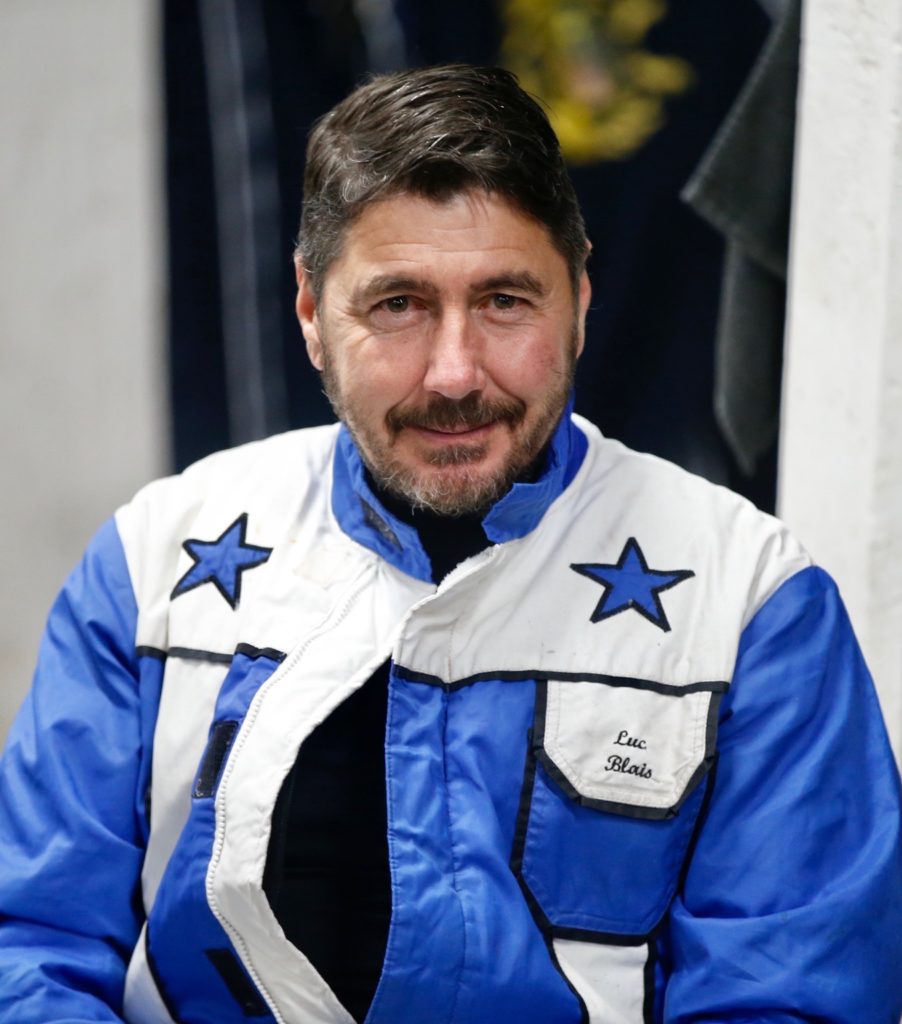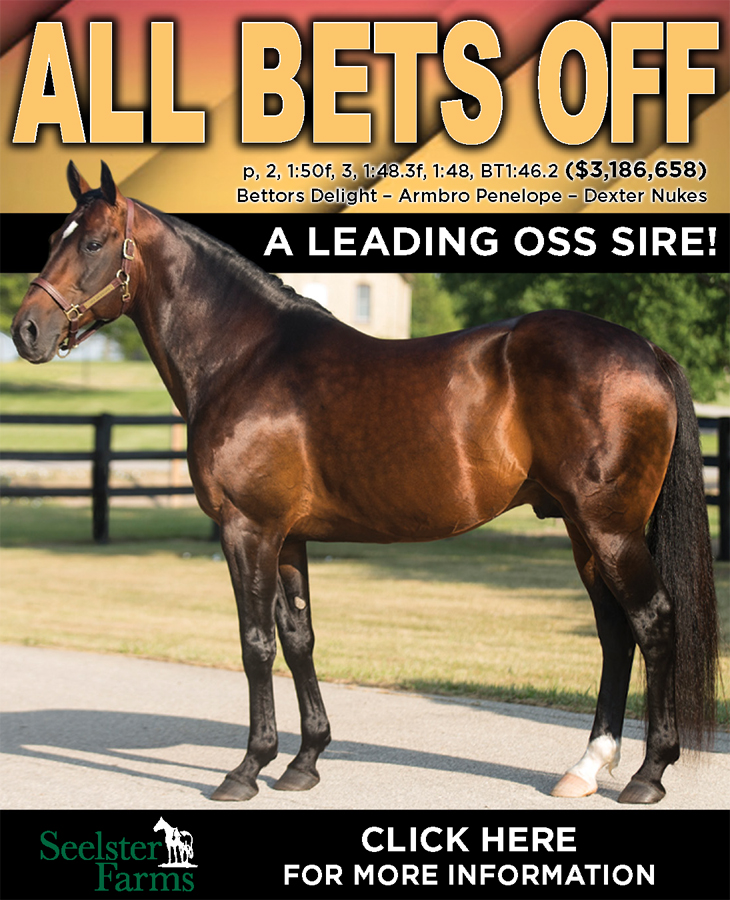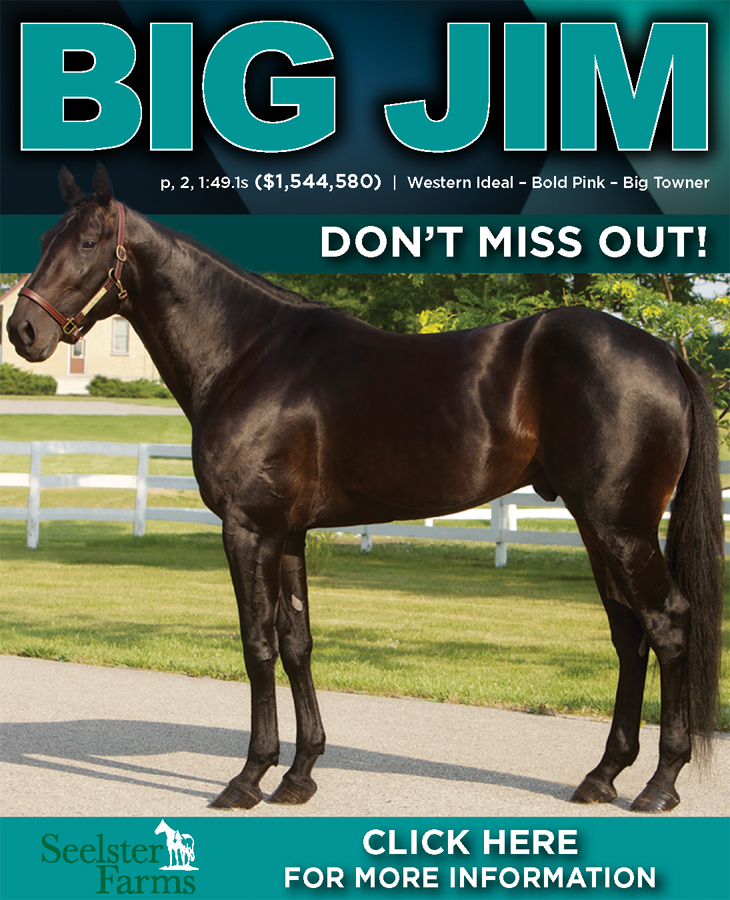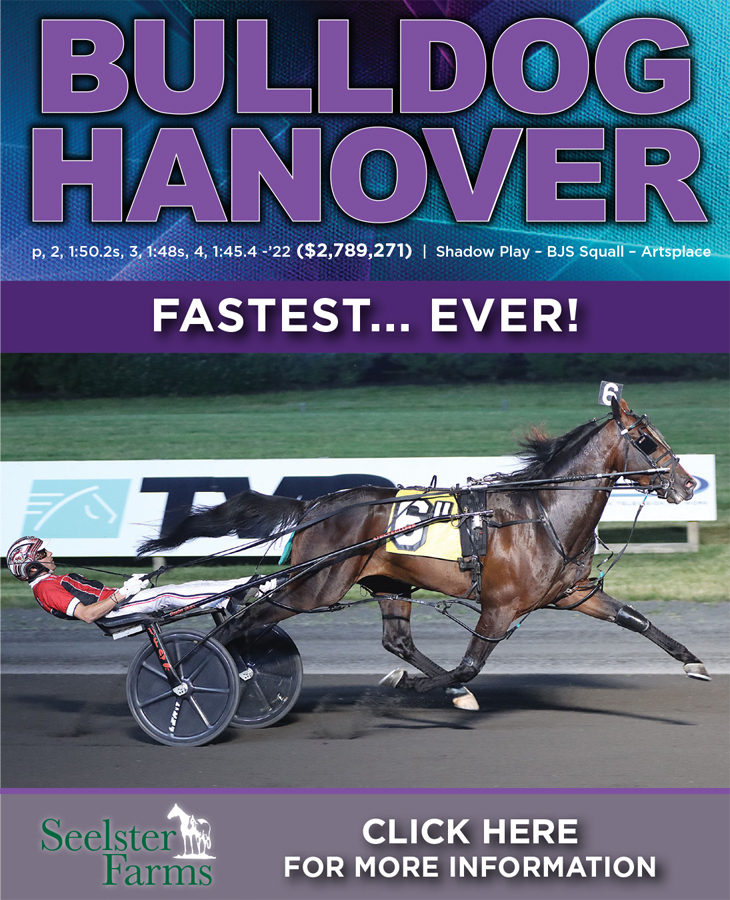

Luc Blais’ passion and determination led to success
by Murray Brown
If one were to ask Luc Blais for a one-word description of his love and association with harness racing, that word would be passion.
“Without passion in this sport you might conceivably become successful in harness racing, but the possibility of that becoming a reality is far less than it would be if you had it,” Blais said. “As for me, having spent a lifetime in the sport, I’ve yet to encounter anybody who has been successful who has not had a genuine love and passion for the sport.”
The native of the Quebec is in charge of the racing stable of Serge Godin’s Determination.
“It is truly a dream come true for me,” Blais said. “I would never in my greatest imagination have dreamed that I would be experiencing what I have been living since I went to work for Monsieur Godin.”
Let’s start at the beginning. When were you first introduced to harness racing?
“The reality is that I have always been involved in the sport. My dad trained and raced at Connaught Park and Rideau Carleton. My brother also raced there. So did my uncle. We would regularly go to small venues throughout Quebec where our family would spend a Sunday afternoon competing in and watching racing. My mother would pack a picnic basket and it would be a great way to spend a day. The purses were generally not of any consequence. There were times when there no purses at all. We might just be racing for a blanket or the proverbial bag of oats. I look back on those days as some of the best of my life.”
Let’s explore the timeline. How did you progress from a small Quebec stable to being the custodian of arguably the most important privately-owned stable in all of harness racing?
“Actually, it was quite some time before I even had my own small stable. I started the way most people in the business do. I was a groom. I worked for several trainers both in Canada and the United States. I suppose the turning point in my career occurred when I went to work for Yves Filion’s Bayama Farms. It gave me the opportunity to not only work for and with a great Hall of Fame horseman, but to also work with well-bred youngsters on their route to occasionally becoming champions.
“It was there that I realized that working with babies was the most satisfying and sometimes among the most challenging things I had ever done. I resolved that if I ever had the opportunity to do this on my own, I would latch onto the chance. Little did I know how lucky I would become.”
One would think that the turning point in your training career was with the trotter Intimidate.
“Without a doubt that was the case. The Intimidate story would likely make a great script for a movie. I was on my own making a living in the sport, but just that. Judith Farrow bred and raised Intimidate. I also had a part in raising him. Almost from the time he was foaled I would track his progress at Ms. Farrow’s farm. From the first time that I encountered him I became part of his life and just as importantly he became a big part of mine. Together with my son, we broke him and lived the dream all the way to his exciting Breeders Crown win. That Breeders Crown race will always be one the greatest thrills of my life. Moreover, looking back I would have to think that Intimidate’s success might have paved my way to getting the opportunity to train Mr. Godin’s horses. Intimidate is now retired at Ms. Farrow’s farm, living the good life as a pensioner.”
Intimidate is obviously one of your favorite horses, do you have any others?
“My favorites constitute a triple dead heat between Intimidate, Forbidden Trade and Emoticon Hanover. They were all terrific champions. It is quite difficult, if not impossible, to choose between them.”
Let’s start with Forbidden Trade. You won the Hambletonian with the first horse you started in the race. Many were surprised. Were you?
“At the risk of sounding as though I’m bragging, the answer would be not really. Once he qualified for the final, I felt he had as good a chance as any of the others. He is a wonderful horse; very well focused with a very stable nervous system. The Hambletonian is a race quite different than most others. Horses racing in it are usually doing something that they’ve never done before. They are racing in the day time before a large crowd. They are also being subject to more media attention than ever before. Not all horses take to that kindly. I knew that Forbidden Trade would. I remember telling my brother before the race that he had overcome his greatest obstacle which was in making the final. I felt that he was as sharp as he’d ever been. He always came to race. I felt that if things did not go against us that we had a good shot.”
How about Emoticon Hanover?
“She was a truly wonderful filly. She acted as though she were special right from the very beginning. We raced her five years through 74 races. She earned $1,778,033. She never once went a bad race; not once. We are now training her first foal a 2-year-old Muscle Hill filly who seems quite promising.”
Let’s turn to yearlings. Mr. Godin and your team do as thorough a job in shopping as anybody out there. Do you have any trade secrets?
“We do what I presume most good yearling shoppers do. We study the catalogs. We focus on the pedigrees that most appeal to us. We watch them in the paddock. We look at the videos. Of course, we evaluate the conformation and the soundness of the yearlings. I suppose that if I do something that most others may not do, it is that I look for the ‘It’ factor. I need to like the yearling for other than physical factors. You might almost call it psychic. The horse needs to reach out and appeal to me. I need to have a connection between it and me.”
Let’s turn to your peers. Are there any trainers out there that you respect more than others?
“There are a good many excellent trainers. One that comes immediately to mind is Jim Campbell. He doesn’t have a giant stable. He does things pretty much the way I like to think that I try to do them. I feel he lets the horses dictate what he is going to do with them, rather than him determining a set course that might not correspond to what is best for the horse. Year after year he has excellent horses that do well. That is no accident. I first noticed him when he was prepping Tagliabue for the Hambletonian. I’ve tried to emulate him since.”
How do things stack up for the Determination stable in 2023?
“I’m very optimistic. We started with 40 head, the largest number we have ever had. They are all still going. Twenty-four of them are 2-year-olds. I believe that they are the finest bunch we have ever had. We train here at Classy Lane Training Center not too far from Mohawk. I believe it’s the best of its kind in the area. They have an excellent well-maintained racetrack. We’ve been between 2:10 and 2:13 with the 2-year-olds. At this stage, we don’t believe in asking for speed. We stress conditioning and soundness, in both mind and body.
“We will train them to the bike for the first-time next week and go on from there. I don’t anticipate starting them until mid-June and perhaps a little later. The racing schedule is skewed so that a great deal of money and prestige comes later in the season. We are not in any big hurry.”
You are a Quebecois. Do you miss La Belle Province?
“Yes. Very much so. That is where my history, my family and culture come from. I think that the greatest loss for harness racing in Canada happened when they stopped racing in Montreal. At one time it was Canada’s capital for the sport. Now there is nothing there. I look upon it as a great tragedy.”
















